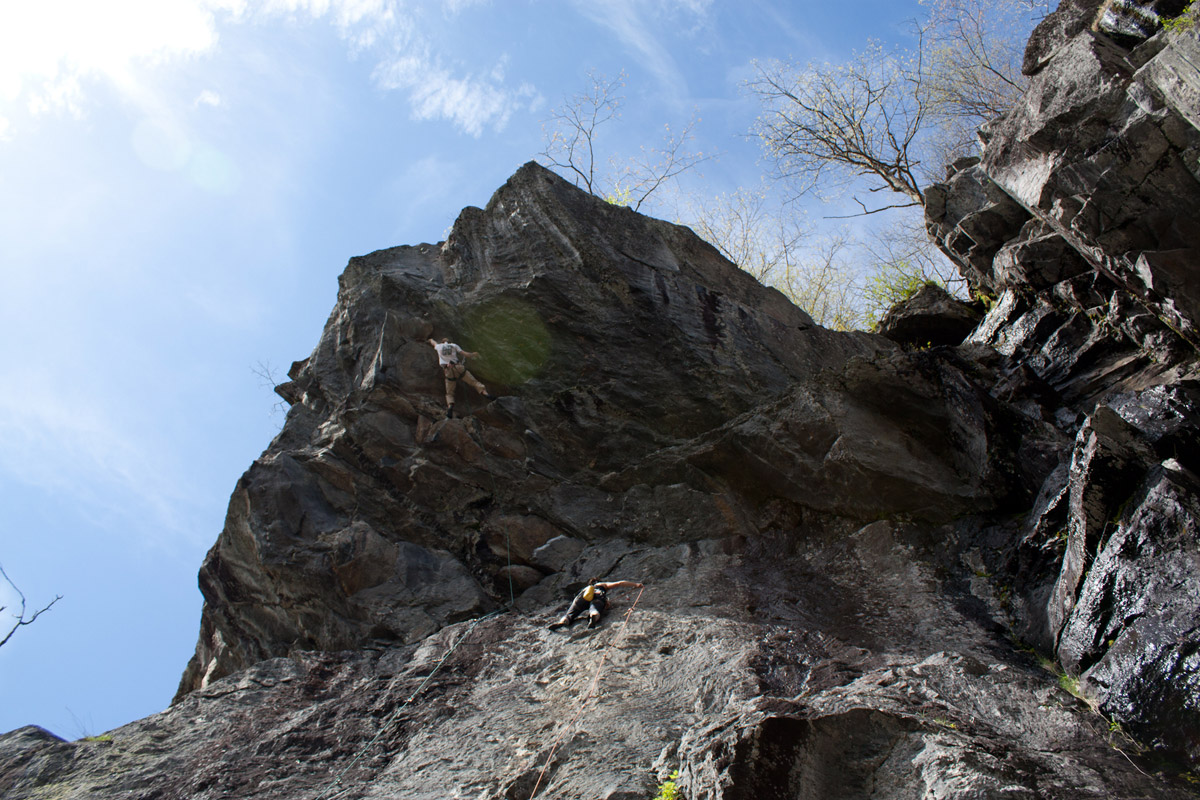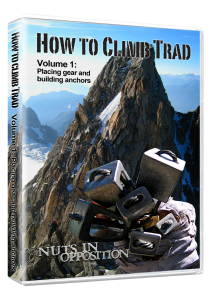Climbers, have you ever wondered how to place gear safely while lead climbing or how to build climbing anchors outside? Do you find reading descriptions in books too dry and abstract? If so, How to Climb Trad is the instructional video for you. Even if you have a basic understanding of climbing anchors and placing traditional gear, this climbing video can take you to the next level by showing you how to do it at the cliff. This instructional video is even good for those who engage in sport climbing.
In How to Climb Trad Volumes 1 and 2, your virtual guide will show you the basics of “trad” climbing. In Volume 1, you’ll watch how to place active and passive gear when leading (such as nuts, cams and tricams), a critique of various pieces of placed gear, and how to tie key knots (like the clove hitch and the munter hitch). In Volume 2 you will learn how to build a flawless climbing anchor (like the slidng “X” or the equalette), you’ll watch the instructor critique and analyze various anchor set ups, and you’ll learn how to set up a belay at the anchor. At every step, your guide will break down the process in simple, visual steps, and then critique the result. Buy one volume or buy the boxset for complete coverage. This instructional DVD offers about 75 minutes of instruction. The Boxset includes both Volume 1 and volume 2.
Whether you’ve been on the sharp end for years, or have wanted to be there but felt you didn’t have the skills to climb routes without bolts, this instructional DVD will help you get where you need to be.
Chapter Summary
Disc 1
Chapter 1. Introduction.
Chapter 2. The Climber’s Rack.
Chapter 3. Knot Basics.
Chapter 4. Placing Gear Generally.
Chapter 5. Placing Passive Protection.
Chapter 6. Placing Active Protection.
Chapter 7. Rope Management and Avoiding Rope Drag.
Chapter 8. Analyzing Gear Placements.
Disc 2
Chapter 9. Nuts and Cams in Opposition and Avoiding the Zipper.
Chapter 10. Building Anchors: The Sliding X, the Equalatte, and the Cordolette.
Chapter 11. Analyzing Anchor systems.
Chapter 12. Tying into the Anchor and Belaying off the Second.


